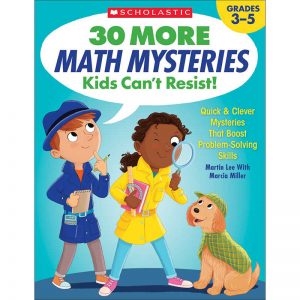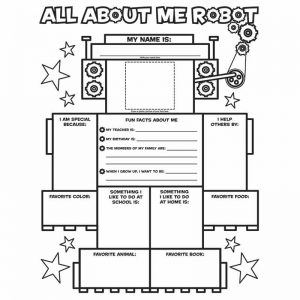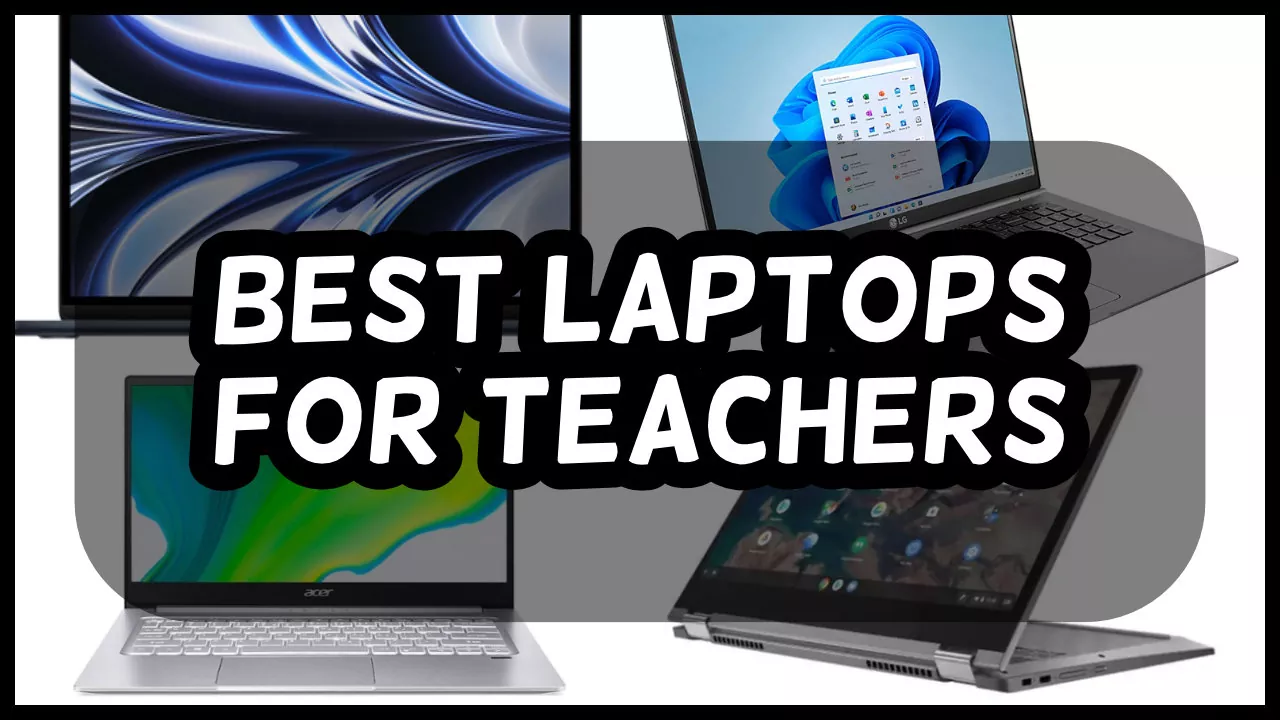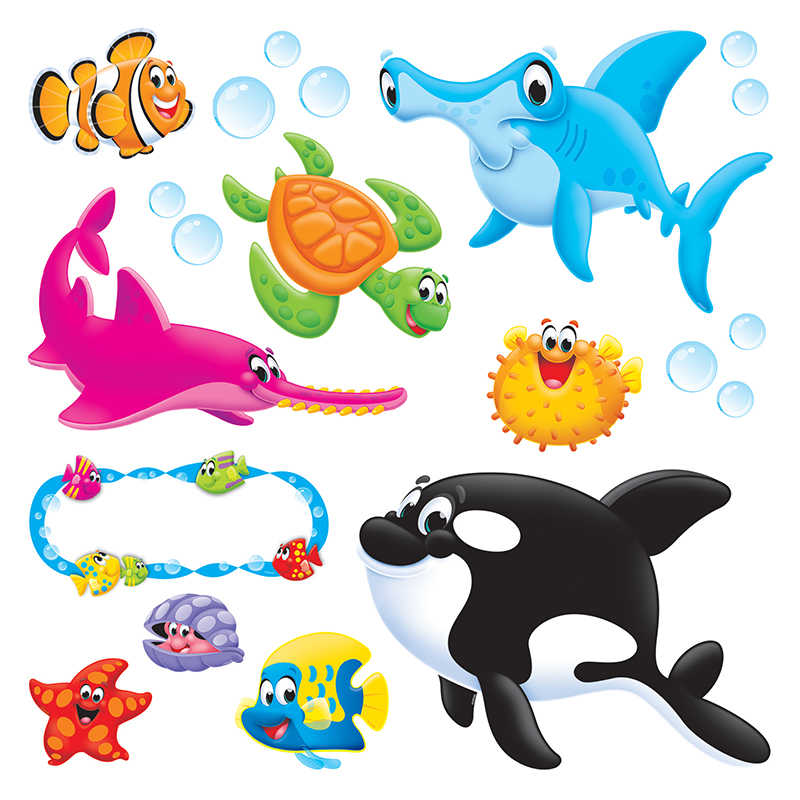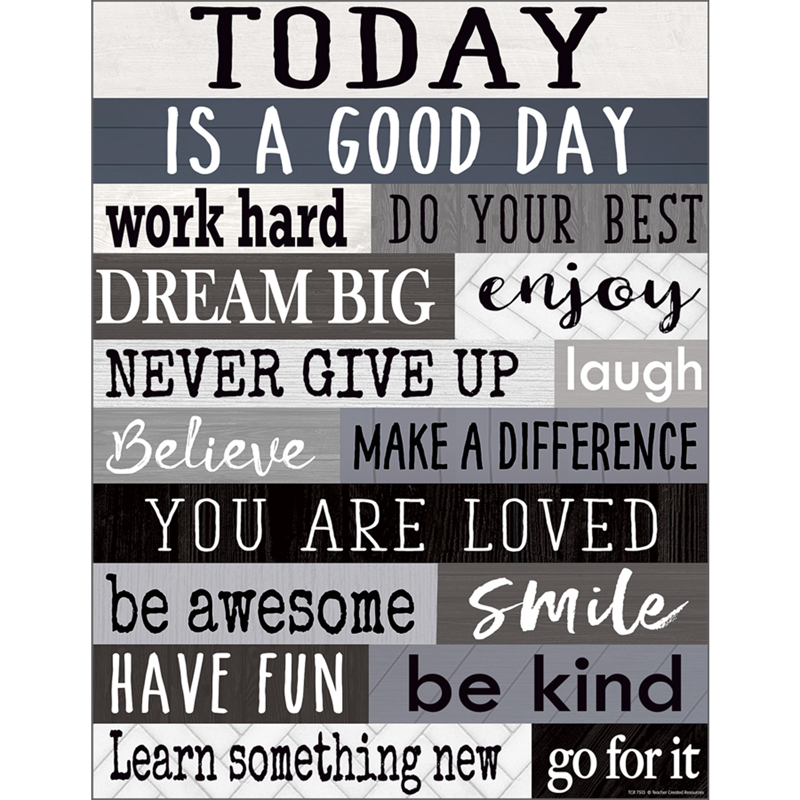Powerful Vocabulary Grade 6 Chapter 3 Content Words
Research Base
• Word Learning Tip Academic content-area words are words that describe something about the specific subject which you are reading. You can determine that a new word is a content word because it will usually be the longest and most difficult word in the sentence and you will not see this word in books that are about a different subject.
• Vocabulary Building Strategy You can learn the meaning of content words by thinking about how they relate to the main subject of the material you are reading.
• Research-Based Lists Chapter 3 includes content subject words that may be assessed on standardized and state achievement criterion tests. They are derived from state and national standards and frameworks showing what is taught at each grade level in that content area, from textbooks dealing with those content areas, as well as from the McRel lists. These words are conceptually rich and are important because of their frequent use in the content areas beginning at this grade level and continuing into subsequent grades.
WORKSHEET & Sample PDF Activity
Sample PDF Activity
Lesson 17 Words About Algebra – 136
Lesson 18 Words About How Plants Make Food – 143
Lesson 19 Words About Earthquakes – 150
Lesson 20 Words About Civilizations – 157
Lesson 21 Words About Pollution – 164
Lesson 22 Test-Taking Words – 171
Words About How Plants Make Food
Learn Words About A New Subject
- Vocabulary Words:
- carbohydrates
- chlorophyll
- nutrient
- photosynthesis
- synthesize
Getting Started
See page 14 for routines for using the Mystery Word of the Week Clue. The mystery word of the week is chemical.
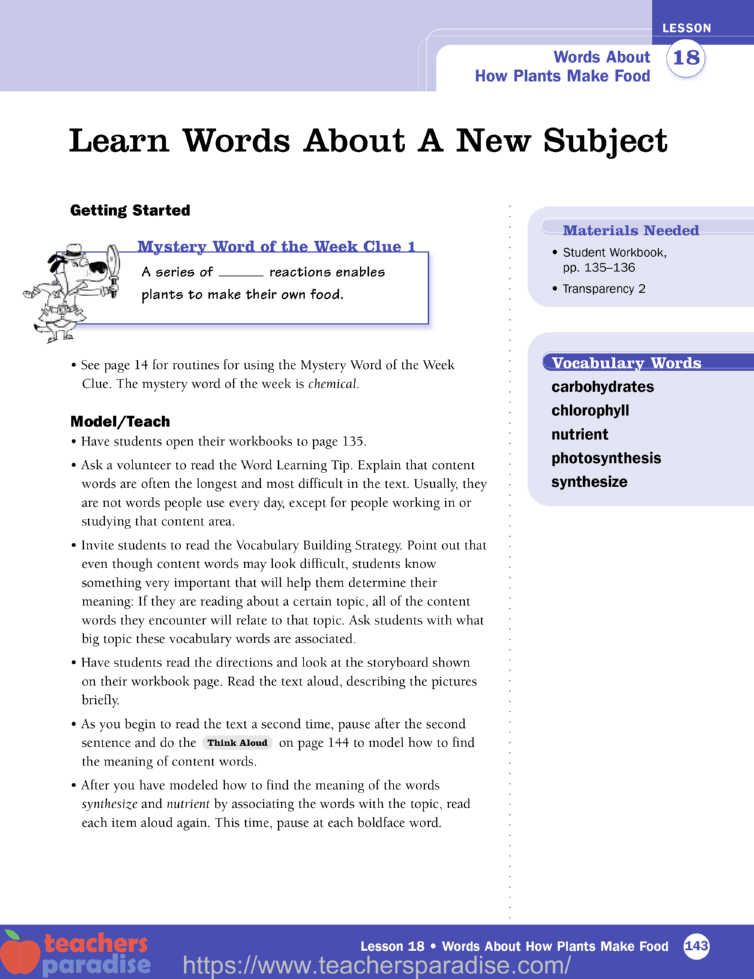
Model/Teach
• Have students open their workbooks to page 135.
• Ask a volunteer to read the Word Learning Tip. Explain that content words are often the longest and most difficult in the text. Usually, they are not words people use every day, except for people working in or studying that content area.
• Invite students to read the Vocabulary Building Strategy. Point out that even though content words may look difficult, students know something very important that will help them determine their meaning: If they are reading about a certain topic, all of the content words they encounter will relate to that topic. Ask students with what big topic these vocabulary words are associated.
• Have students read the directions and look at the storyboard shown on their workbook page. Read the text aloud, describing the pictures briefly.
• As you begin to read the text a second time, pause after the second sentence and do the on page 144 to model how to find the meaning of content words.
• After you have modeled how to find the meaning of the words synthesize and nutrient by associating the words with the topic, read each item aloud again. This time, pause at each boldface word.
• Place the transparency on the overhead projector. Ask students what word or phrase belongs as the title or the author’s big idea (how plants make food or photosynthesis). Also tell them to try to determine what each word means. For example, synthesize is connected to the idea of how plants make food because it tells how they put together different parts.
• As students discuss a word, record the definition and the meaning on the transparency.
• After students have discussed each word, allow them to work in small groups. Give them the opportunity to work with flashcards to reinforce word meanings.
English Language Learners
• Guide students to pronounce the -y in synthesize and photosynthesis as a short vowel. Have them practice saying these words aloud several times. Ask them to say and then write a sentence to show that they know the meanings of both words.
Independent Activity
• Science Connection Have students keep an eye out in their reading—including in their science textbooks—for additional words that describe aspects of photosynthesis or of related processes, such as respiration. Let students’ current biology curriculum guide them. Encourage them to think about the Word Learning Tip and Vocabulary Building Strategy to learn new words in science whenever they have trouble.
Think Aloud
Let’s take a look at the storyboard together. This talking leaf is saying, “…without me, green plants couldn’t synthesize the nutrients, such as sugar…” If I didn’t know the meanings of the words synthesize and nutrients, I’d stop and think about how these words are connected. The first thing I’d think about would be the big idea for this lesson, which is how plants make food, and how that might relate to this sentence. This sentence is about plants doing something as they make food: synthesizing nutrients. “Synthesizing nutrients” has to tell me something specific about how plants make food. When I look further at the context, I see, “nutrients, such as sugar.” So a nutrient is probably a food substance, and I know that food substances are synthesized, or put together with other foods to make energy for all living things. Therefore, plants make food by putting sugar with other things.
Connect Words and Meanings
Review and Share Create a Word Wall for the science words students come across for the activity on page 144 in the teacher’s edition. Add words to it in response to student suggestions. You may want to help student focus on words in their science texts with which they are having difficulty.
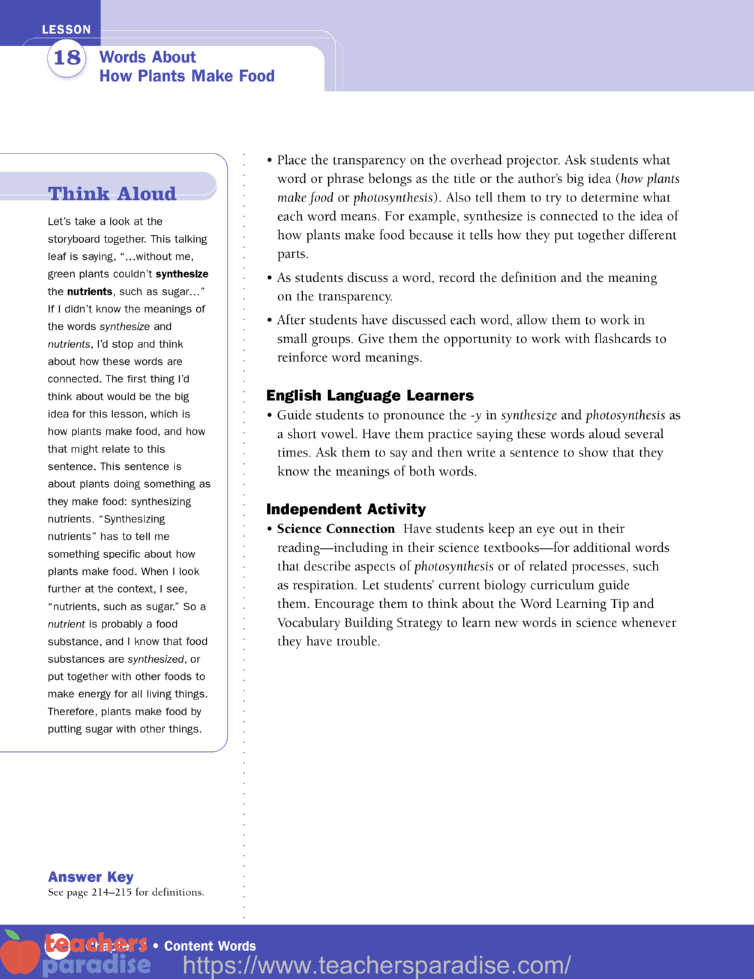
Model/Teach
• Have students turn to page 137 in their workbooks.
• Before students begin the activity, do the .
• Ask students to complete the rest of the activity independently.
• Check the answers to the five questions orally.
• Have students complete the second activity on their own and work with a partner to check their responses. English Language Learners
• Review the varied pronunciations of -h with English language learners. In carbohydrates, -h is pronounced as a separate letter. In photosynthesis and synthesize the letter is part of the soft /th/ sound. In chlorophyll, the first h is silent after a c pronounced as /k/, while the second -h is part of the -ph diphthong that is pronounced /f/. Ask the students to generate sentences using these words.
Independent Activity
Research Photosynthesis and Respiration Invite students to research this topic as homework. Suggest that they create a diagram for their talk. The essential fact is that in photosynthesis, plants take carbon dioxide from the air and release oxygen as a byproduct; in respiration, both plants and animals take oxygen from the air and release carbon dioxide as a byproduct. This sets up an endless cycle, making it possible for all living things to live.
Think Aloud
The definition of the word we need to fill in is “a food substance that is needed for life and growth, such as protein or vitamins.” I know this is related to the big idea of how plants make food. Food, protein, vitamins—those are crucial content words and clues. Looking at the list, I find carbohydrates. Is that it? That’s a food substance, but it’s not the same as protein and vitamins, so I’ll say no. When I reread the definition, it makes perfect sense. I write nutrient.
Words About How Plants Make Food – Use Content Words
Getting Started
Review and Share Have volunteers present their oral reports on photosynthesis and respiration. Encourage students to use visual aids such as a diagram on the chalkboard showing the carbon dioxide-oxygen cycle. If you can, allow time for questions after each report.
Model/Teach
• Have students turn to page 138 in their workbooks.
• To introduce the activity to students, do the .
• Have students complete the activity on their own.
• Ask students to read the text under the diagram and supply the missing words. Check their responses orally.
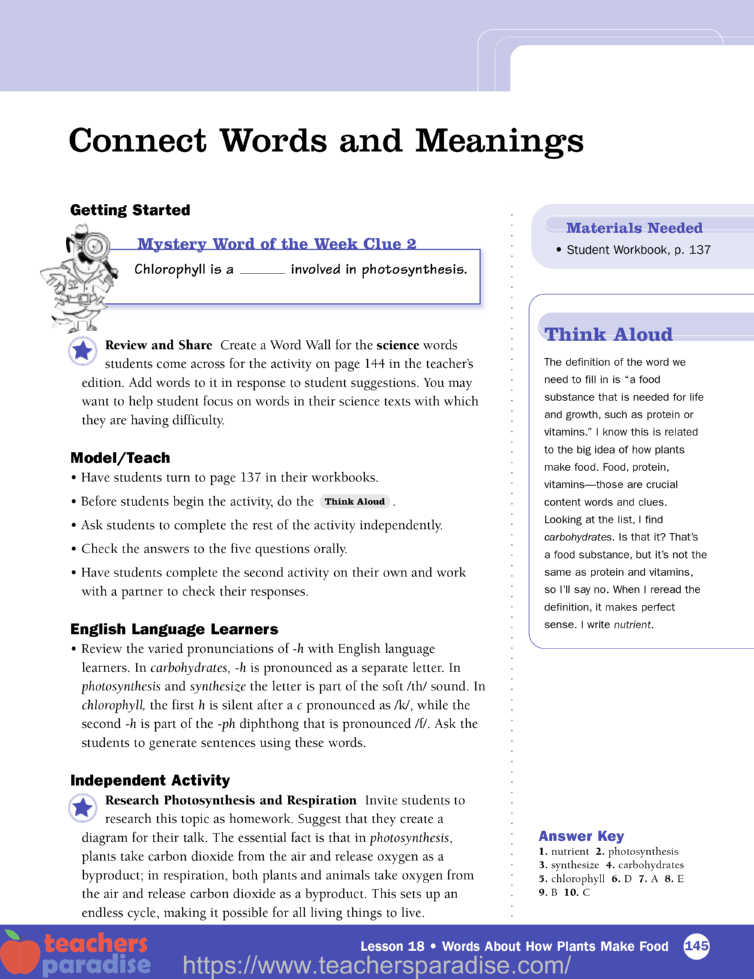
Independent Activities
Interview a Botanist Encourage students to think of interesting plants in a variety of habitats. For example, they might like to interview a botanist to find out more about a desert plant such as a saguaro cactus, or a double coconut plant living in the rainforest.
• Drawing Photosynthesis Have students make their own diagrams of the process of photosynthesis. Display one or more of the best examples.
Put Words Into Action
Review and Share Give volunteers an opportunity to present their interviews from the activity on page 138 in their workbooks. If new words relating to how plants make food are introduced, add them to the Word Wall.
Model/Teach
• Have students turn to page 139 in their workbooks.
• Use the to help explain the activity to students.
• Have students complete the activity independently. Then arrange them in small groups to share their responses.
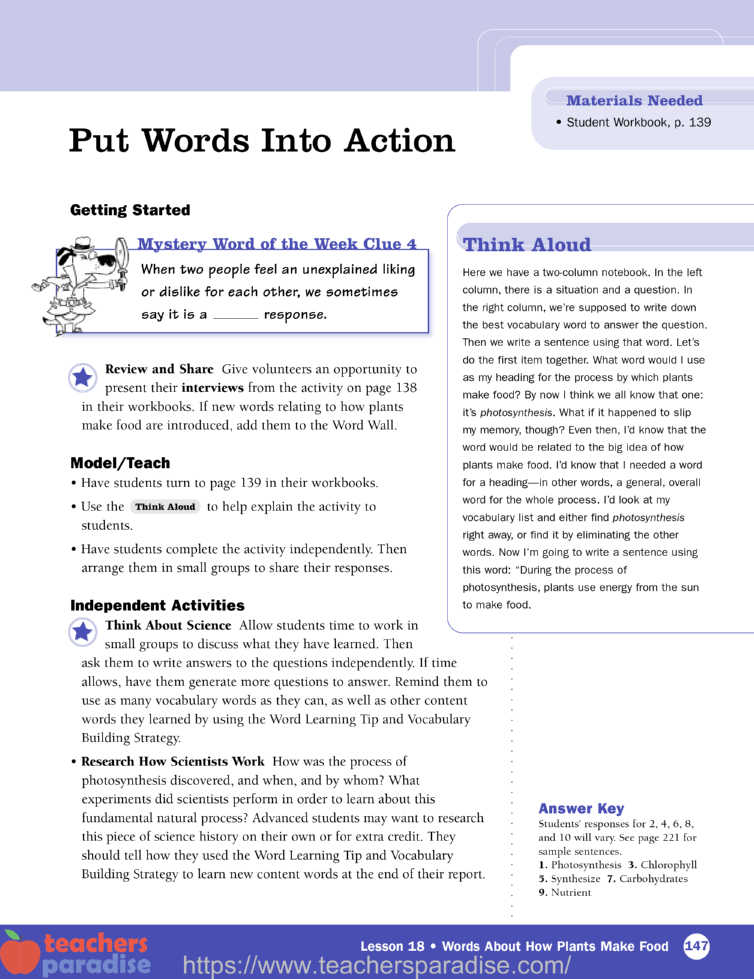
Independent Activities
Think About Science Allow students time to work in small groups to discuss what they have learned. Then ask them to write answers to the questions independently. If time allows, have them generate more questions to answer. Remind them to use as many vocabulary words as they can, as well as other content words they learned by using the Word Learning Tip and Vocabulary Building Strategy.
• Research How Scientists Work How was the process of photosynthesis discovered, and when, and by whom? What experiments did scientists perform in order to learn about this fundamental natural process? Advanced students may want to research this piece of science history on their own or for extra credit. They should tell how they used the Word Learning Tip and Vocabulary Building Strategy to learn new content words at the end of their report.
Think Aloud
Here we have a two-column notebook. In the left column, there is a situation and a question. In the right column, we’re supposed to write down the best vocabulary word to answer the question. Then we write a sentence using that word. Let’s do the first item together. What word would I use as my heading for the process by which plants make food? By now I think we all know that one: it’s photosynthesis. What if it happened to slip my memory, though? Even then, I’d know that the word would be related to the big idea of how plants make food. I’d know that I needed a word for a heading—in other words, a general, overall word for the whole process. I’d look at my vocabulary list and either find photosynthesis right away, or find it by eliminating the other words. Now I’m going to write a sentence using this word: “During the process of photosynthesis, plants use energy from the sun to make food.
Words About How Plants Make Food – Review and Extend
Getting Started
Review and Share Give volunteers an opportunity to present their interviews from the activity on page 138 in their workbooks. If new words relating to how plants make food are introduced, add them to the Word Wall.
Model/Teach
• Have students turn to page 139 in their workbooks.
• Use the to help explain the activity to students.
• Have students complete the activity independently. Then arrange them in small groups to share their responses.
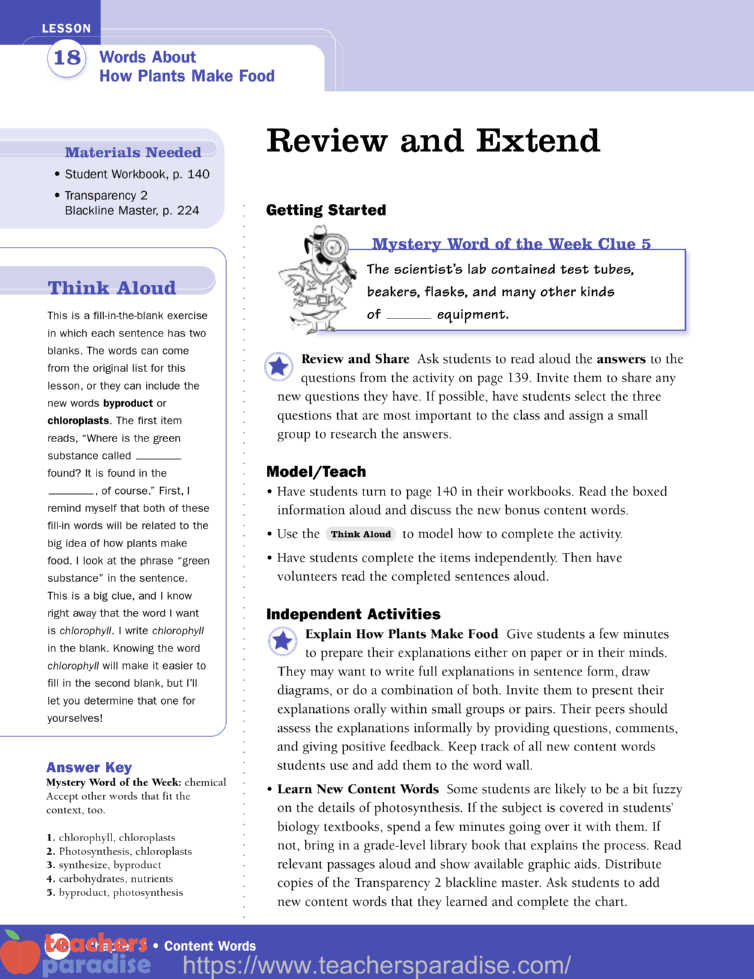
Independent Activities
Think About Science Allow students time to work in small groups to discuss what they have learned. Then ask them to write answers to the questions independently. If time allows, have them generate more questions to answer. Remind them to use as many vocabulary words as they can, as well as other content words they learned by using the Word Learning Tip and Vocabulary Building Strategy.
• Research How Scientists Work How was the process of photosynthesis discovered, and when, and by whom? What experiments did scientists perform in order to learn about this fundamental natural process? Advanced students may want to research this piece of science history on their own or for extra credit. They should tell how they used the Word Learning Tip and Vocabulary Building Strategy to learn new content words at the end of their report.
Think Aloud
Here we have a two-column notebook. In the left column, there is a situation and a question. In the right column, we’re supposed to write down the best vocabulary word to answer the question. Then we write a sentence using that word. Let’s do the first item together. What word would I use as my heading for the process by which plants make food? By now I think we all know that one: it’s photosynthesis. What if it happened to slip my memory, though? Even then, I’d know that the word would be related to the big idea of how plants make food. I’d know that I needed a word for a heading—in other words, a general, overall word for the whole process. I’d look at my vocabulary list and either find photosynthesis right away, or find it by eliminating the other words. Now I’m going to write a sentence using this word: “During the process of photosynthesis, plants use energy from the sun to make food.
Words About How Plants Make Food – Review and Extend
Getting Started
Review and Share Ask students to read aloud the answers to the questions from the activity on page 139. Invite them to share any new questions they have. If possible, have students select the three questions that are most important to the class and assign a small group to research the answers.
Model/Teach
• Have students turn to page 140 in their workbooks. Read the boxed information aloud and discuss the new bonus content words.
• Use the to model how to complete the activity.
• Have students complete the items independently. Then have volunteers read the completed sentences aloud.
Independent Activities
Explain How Plants Make Food Give students a few minutes to prepare their explanations either on paper or in their minds. They may want to write full explanations in sentence form, draw diagrams, or do a combination of both. Invite them to present their explanations orally within small groups or pairs. Their peers should assess the explanations informally by providing questions, comments, and giving positive feedback. Keep track of all new content words students use and add them to the word wall.
• Learn New Content Words Some students are likely to be a bit fuzzy on the details of photosynthesis. If the subject is covered in students’ biology textbooks, spend a few minutes going over it with them. If not, bring in a grade-level library book that explains the process. Read relevant passages aloud and show available graphic aids. Distribute copies of the Transparency 2 blackline master. Ask students to add new content words that they learned and complete the chart.
Think Aloud
This is a fill-in-the-blank exercise in which each sentence has two blanks. The words can come from the original list for this lesson, or they can include the new words byproduct or chloroplasts. The first item reads, “Where is the green substance called found? It is found in the , of course.” First, I remind myself that both of these fill-in words will be related to the big idea of how plants make food. I look at the phrase “green substance” in the sentence. This is a big clue, and I know right away that the word I want is chlorophyll. I write chlorophyll in the blank. Knowing the word chlorophyll will make it easier to fill in the second blank, but I’ll let you determine that one for yourselves!
Check Your Mastery
Give the Test
• Ask students to turn to page 141 in their workbooks.
• Read the directions aloud: “Circle the letter of the best answer for each item.” Explain that this is a multiple-choice activity with three choices per item. Students must choose the correct word to complete each sentence.
• Model how to complete a sentence in this activity by writing the following on the chalkboard.
• Ask a volunteer to provide the answer (C). Briefly discuss the answer as necessary.
• Instruct students to complete the activity independently.
• Ask students to check their answers after they finish.
• Have students provide one answer at a time. Discuss any problems students had in answering correctly.
• Discuss how the Word Learning Tip and the Vocabulary Building Strategy helped students find correct responses.
• Tally students’ correct responses.
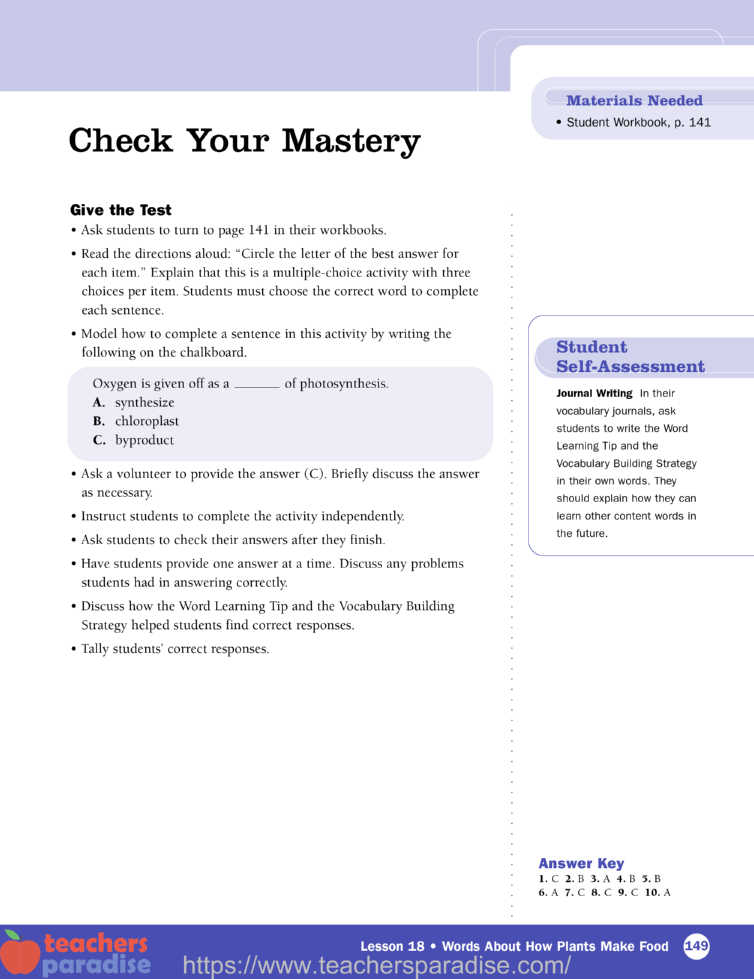
Student
Self-Assessment Journal Writing In their vocabulary journals, ask students to write the Word Learning Tip and the Vocabulary Building Strategy in their own words. They should explain how they can learn other content words in the future.

